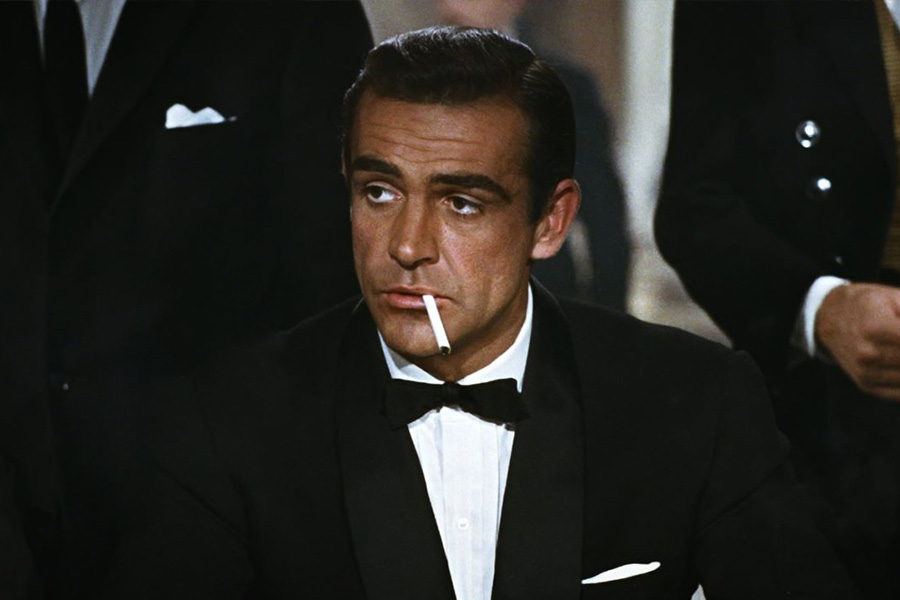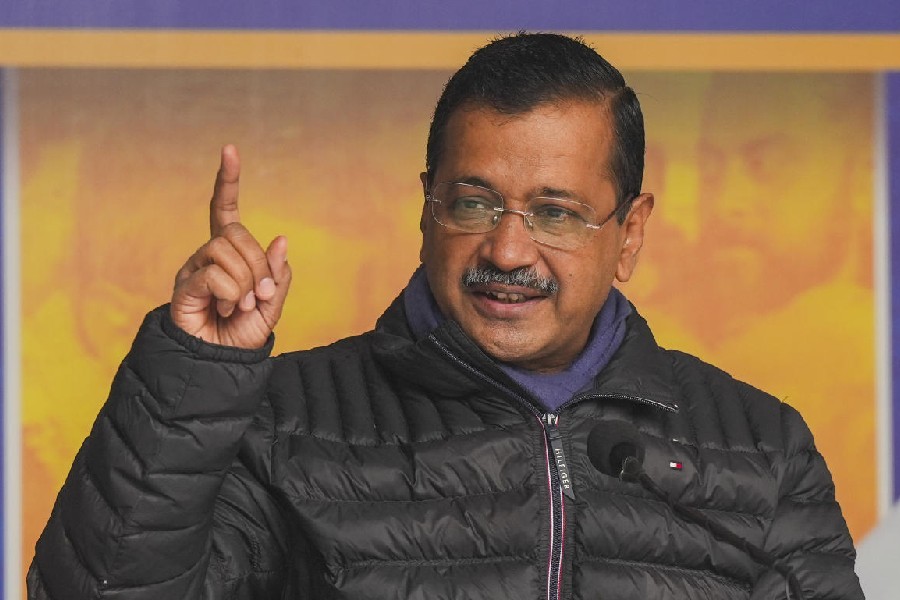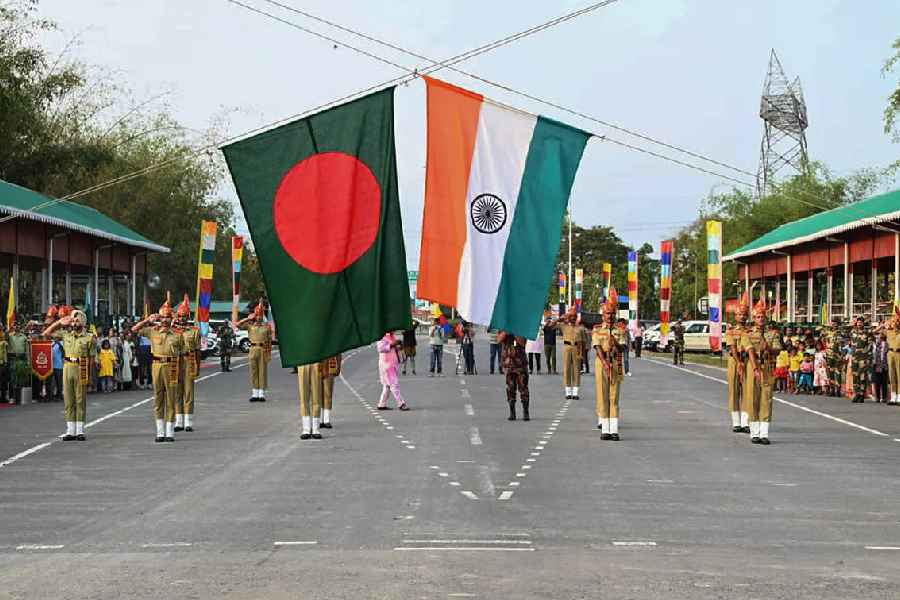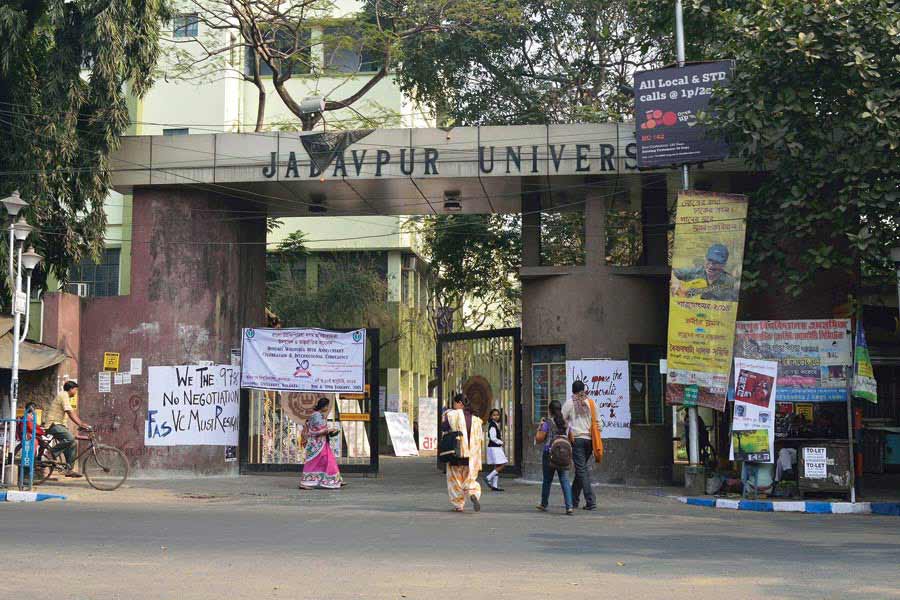‘Haan, James Bond ke potay hain yeh.’ (Yes, he is James Bond’s grandson.) Sholay has been justly celebrated for its iconic dialogues but few might recall this one by Jai in response to Viru’s tall tales to Basanti about his shooting prowess. Interestingly enough, the original dialogue had a more telling play on words – Tantiya Tope ke potay hain ye (Tope, pronounced with an accent on the ‘e’, and potay feeding off each other) – but for some reason it was changed in later cuts of the film. That the writers homed in on James Bond is testimony to the popularity of the world’s beloved spy.
Dr. No, starring Sean Connery as James Bond, was the first film of the franchise. Released in many countries in 1962, Dr. No came to India on June 3, 1963. The timing could not have been better for Hindi cinema. Throughout the 1940s and 1950s, Hindi cinema was ruled by romantic heroes, sentimental heroes, comic heroes and antiheroes who struggled with either unemployment, affairs of the heart or ideological conflicts – sometimes all of these. There were ‘spy thrillers’ of course, like Samadhi (1950), Salaam Memsaab (1961) and China Town (1962).
However, Dr. No showed Hindi cinema what it had missed: a hero who could step out of his box of personal conflicts and solve bigger problems, taking mortal risks in the process. Presence of mind, intelligence, charm, courage, commitment – we needed young men like these. And soon came Spy in Goa (1968), C.I.D 909 (1967), Farz (1967), Spy in Rome (1968), Puraskar (1970), Inspector (1970) – all with a duty-bound brave heart as the masthead of the story, working for India’s secret services like the CID and CBI or equivalent. Sunil (Dharmendra) and Meenakshi (Mala Sinha) in Ankhen (1968) were exceptions as the group they worked for was a non-government one led by a retired army major.
Importing James Bond and his suffix to Hindi films of the 1960s
What were they fighting? Villains in the James Bond universe needed to leverage science, technology and space research to implement their big-impact plans like looting Fort Knox or taking control of the moon. Hindi films imported this villainy by introducing a ‘scientist’ or a ‘professor’ whose invention was of interest to another nation, thus creating the ‘foreigner villain’. In Puraskar, a scientist invents a gadget that uses sound waves to destroy weapons thousands of miles away. A few traitors, hand-in-glove with foreign spies, want to steal it.
In Farz, the jasoos of a foreign power is determined to sabotage India. In CID 909, it is once again a formula devised by a scientist for ‘aman aur shanti’ that a foreign power tries to steal. In Inspector (1970), a sly professor creates a nerve gas that can render people immobile, like Auric Goldfinger’s invention to immobilise security at Fort Knox. A foreign power buys out the professor, thus posing a threat to India. In Ankhen, an international outfit provides lethal arms to Indian terrorists to blow up railway bridges in Assam. Agent Sunil is pressed into service to take care of them.
Since the Cold War, a James Bond staple, could obviously not be fitted to the Indian context, there were Mongoloid-featured villains like Supremo and Doctor X (Jeevan) instead in Farz and Ankhen respectively, alluding to a neighbouring country. There was a Wong (Rajen Haskar) from Hong Kong in CID 909 (though he does look very Indian). As is evident, these adversaries were part of internationally-networked organisations with a big agenda and not a small gang of thugs.
Like millions across the world, scriptwriters in Hindi films were fascinated by the three-digit suffix of James Bond. While ‘909’ in CID 909 is self-explanatory, the operative’s code name in Golden Eyes Secret Agent 077 (1968) could be mistaken for a typo of the original Ian Fleming code. ‘CID Agent 116’ it is in Farz, and ‘Agent 707’ in Inspector. Someone had the idea to go alphanumeric for a change with ‘Agent XX7’ in Spy in Rome. Over the next decades, ‘Bond’ and his numeric suffix featured in a number of film titles across Indian languages: James Bond 777, SOS Jasoos 007, Bond 303, Mr Bond, and even Lady James Bond.
Sharp suit and a pistol – all you needed to be a Bond-like hero
As James Bond transitioned from Sean Connery to Roger Moore in the 1970s, Hindi films reinforced its commitment to the franchise with Shyam Kumar in The Train (1970), Suraj Kumar in Charas (1976) and Agent Vinod in Agent Vinod (1977), bearing distinct shades of Mr Bond, especially the last named film. All it took to be ‘Bond-like’ was for the hero to be in a sharp suit and carry a pistol. And be surrounded by a bevy of beauties.
A decade after his ‘Agent 116’ in Farz, director Ravikant Nagaich introduced his second ‘Bond’, ‘Gun Master G-9’, in Surakksha (1979) who was up against a Dr Shiva (south Indian actor Balaje) who planned to destroy cities and countries using his atomic reactor. ‘Gun Master G-9’ was back soon in Wardat (1981), while Raksha (1982) marked the return of ‘Agent 116’ fighting Big Hardy (Prem Chopra) who is keen on scuttling India’s atomic power programme by assassinating and abducting Indian scientists. Nagaich loved this ‘atomic power’ theme, it appears.
Characters and sequences were lifted from the original films without as much as by your leave. There was the equivalent of ‘M’ (James Bond’s boss) in these, played by Iftekhar, David, K.N. Singh, Hiralal and others. Agent Vinod throwing the hat at his boss’s secretary and flirting with her were a direct take-off from 007’s relationship with Ms Moneypenny, as was ‘909’s exchanges with Nalini, his chief’s secretary-cum-typist.
The opening credit sequence in Inspector (1970) was a cut-paste job from any Bond film. Often, our hero, like Bond, would be cavorting with women just before receiving a message from his chief asking him to come over for an important assignment. The towering, steel-toothed ‘Jaws’ in The Spy Who Loved Me (1977) became ‘Gorilla’, the villain with iron teeth, in Raksha, played by the 6’8’’-tall Olympian and Asian Games champion Praveen Kumar Sobti. In CID 909, Sophia can perhaps be seen as the counterpart of Pussy Galore in Goldfinger who starts out as part of the gang but turns against them.
Weak plots, shoddy scripts diluted Indian cloning of Bond
That Hindi filmdom in the 1960s was a stranger to this genre was evident in how stiff the actors playing the villain characters looked, as well as the tacky sets and gadgets. Research and science have never been Bollywood’s strong suit and these imitations often made for unintentional laughter. For example, in Puraskar the nameplate in one of the scenes reads ‘Office of the C.B.I’. But the actual name of the film is ‘Puraskar CID Agent’. Weak plots, shoddy scripts and pedestrian production values diluted the Indian attempts at cloning Bond. The only film that did a James Bond with some style and panache was Ramesh Sippy’s Shaan (1980), with its bald villain Shakaal obviously inspired by Blofeld, his hideout with hungry sharks swimming in deadly pools, the opening credits and background music, and some of the action sequences (the chase where the character played by Sunil Dutt is hemmed in and abducted, for example).
The Indian origin of the James Bond theme music by Monty Norman
Which brings us to one of the great contributions of the James Bond franchise to cinema – its iconic theme music. Incredible as it may sound, Monty Norman, who composed the theme which was later reworked and given its cult orchestration by another legend, John Barry, had as its origins an Indian inspiration, with a distinctive sitar and tabla ensemble. As Norman himself narrated, Albert Broccoli and Harry Saltzman had wanted a theme tune to promote Dr No. Norman had something which Count Basie had recorded, but Norman wasn’t entirely happy with it as it ‘failed to capture the sinisterness of James Bond’s character enough’. That is when he remembered a number he had written, Good Sign, Bad Sign, for a stage musical based on V.S. Naipaul’s A House For Mr Biswas, being directed by Peter Brook. The show was shelved as was the song which went: ‘I was born with this unlucky sneeze and what is worse I came into the world the wrong way round… Pundits all agree that I’m the reason why...’ Though the existing theme was too strongly Asian, Norman ‘split the notes and switched the initial riff from the sitar to the guitar’. Rock guitarist Vick Flick’s electric guitar took over from the sitar and a classic was born.
Needless to say, the theme has made its way to a number of Hindi films, often used as accompaniment in chase sequences, even comic sequences involving the hero’s sidekick. The tune has been used in a sequence in Hamrahi (1974), Randhir Kapoor’s introduction scene in Ram Bharose (https://youtu.be/AyqIBC0SUpM?t=234), Jagdeep’s Soorma Bhopali, the title music of Warrant (1975) (https://www.youtube.com/watch?v=bg4EzXSIkss) and in the song Tumko dekha hai aksar khwab mein in Prem Shakti (with Udit Narayan and Lata Mangeshkar actually vocalising the notes and Govinda and Karisma Kapoor gyrating to it). https://www.dailymotion.com/video/x2hycka
If all these sound rather derivative, there is one aspect to these replicas of James Bond that is purely Bollywood. These Indian Bonds were good at something that the original never had to do – sing a song. It is thus we have the desi Bond running and rolling down verdant slopes singing Mast baharon ka main aashiq (https://www.youtube.com/watch?v=TUgloXRjz3w) or cavorting with skimpily clad women in Mausam hai gaane ka (https://www.youtube.com/watch?v=TbJWLuoMvBk), giving Sean Connery and Roger Moore a run for their money and creating a uniquely Indian phenomenon, the singing and dancing spy.
(Balaji Vittal is the co-author of RD Burman: The Man, The Music (2011). His latest book is Pure Evil: The Bad Men of Bollywood.
Shantanu Ray Chaudhuri is a film and music buff, editor, publisher, film critic and writer. )











